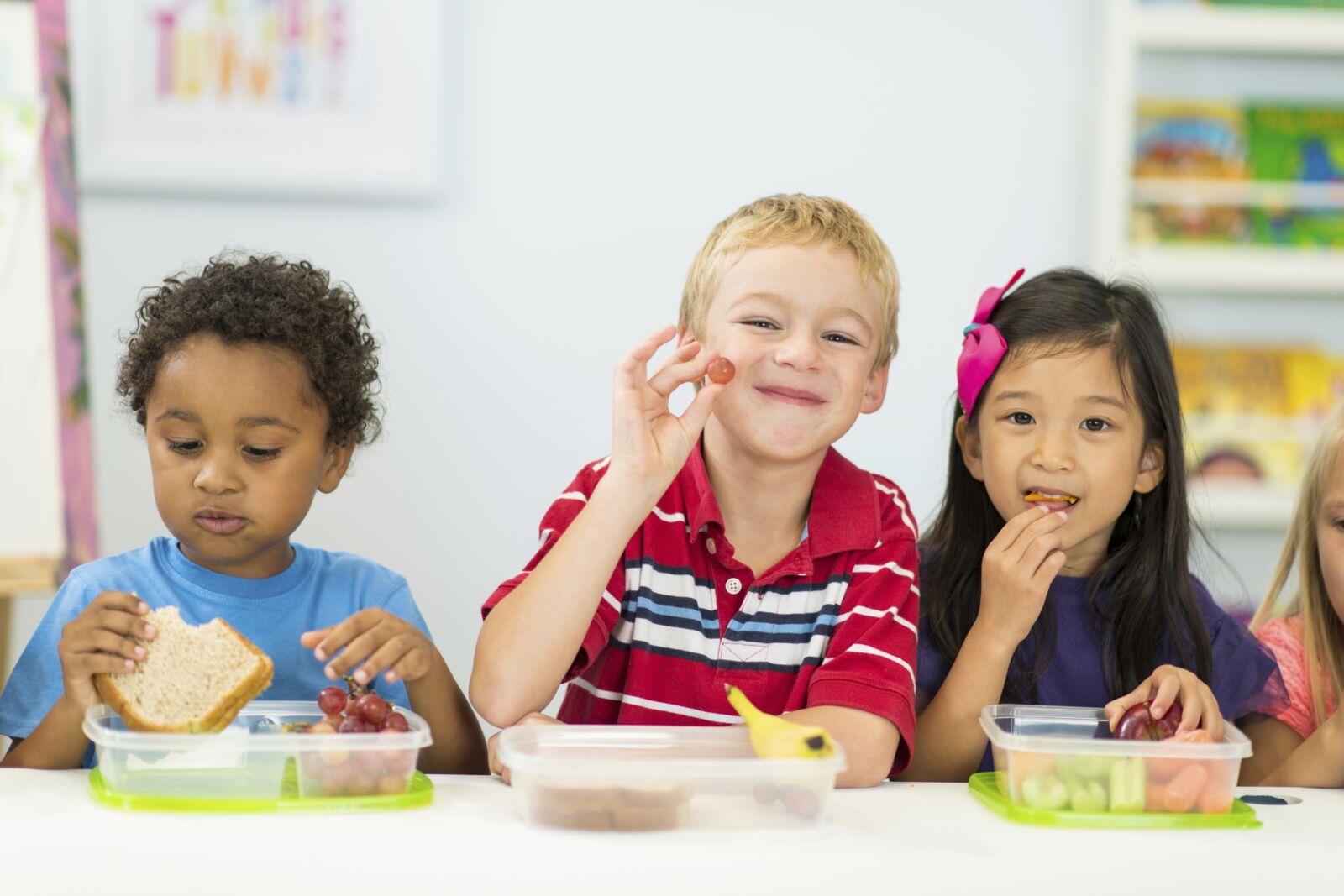Following the Division of Responsibility can help support kids in learning to eat well and help everyone relax and enjoy meals and snacks at school and in child care centres.
When you grew up, were you told to “eat your veggies and then you can have dessert?” Or maybe you’ve said to kids, “that has too much sugar, it’s a sometimes food”.
If this sounds familiar, you are not alone and you are doing the best you know how! As educators (and perhaps parents ourselves), we want kids to grow up as happy and healthy as possible. This is why we might use many of these well-intentioned tactics to “get kids to eat ‘healthy’ foods”. However, the reality is that those tactics often create more stress (mealtime battles, anyone?) and hinder kids’ long-term process of learning to eat a variety of foods in the amounts that feel right to them.
Okay, so what? Is there a less stressful approach to mealtimes then?
The Satter Division of Responsibility (sDOR) can Help
Trust and respect are important aspects of meals and snacks at school and childcare centres and are also the foundation of the Satter Division of Responsibility in Feeding (sDOR). Ellyn Satter, a dietitian and family therapist, created this evidence-based approach in 1986.
The sDOR helps kids learn to trust their hunger and fullness cues. This approach also helps infants! Clearly understanding and applying everyone’s role at school or daycare can take the stress out of mealtimes and can help kids feel more connected with themselves, their world, and their food.
What does the Division of Responsibility look like at school or daycare?
What is sDOR exactly? It sets out specific roles for eating and by following it, supports kids in the long-term process of learning to eat a variety of foods and to make food choices as they get older.
The Parent or Caregiver’s role:
- Decide what foods are packed for meals and snacks.
- In junior high and high school, students gradually take on this role by choosing from foods available at home or purchasing foods at the school cafeteria or nearby stores and restaurants.
The childcare centres and schools’ roles:
- Schools and daycares decide when and where food is eaten. In other words, they provide structure around mealtimes.
- In situations where childcare centres or schools provide meals or snacks, they may take on the additional role of deciding what foods are offered.
- In junior high and high school, students are often allowed to leave school property; however, schools should still offer a designated eating space.
The kid’s roles:
- Decide whether and how much to eat from what is packed.
- Trust students to decide whether or not to eat.
- Respect students’ decisions about how much to eat. This includes eating food in the order they choose.
Trust is a Key Ingredient
Learning to let kids eat in a way that is right for them is an important part of following the sDOR. Trust that families are also doing their best. All kids have different health needs, food experiences, abilities, and preferences. For those reasons and more, families may define “healthy foods” differently.
With practice, the sDOR can also help kids gain awareness of what they are feeling and be empowered to communicate what their body needs.1 Kids are more likely to eat a larger variety of foods, regulate their intake, and are more likely to have positive attitudes about food.
How to share this information with parents and caregivers
If you’d like to share this approach with families and caregivers, you could introduce it using the Nurturing Healthy Eaters handout series (more information below) during orientations, parent nights or other means of family communication.
General eating advice: The eating advice in this blog is based on Ellyn Satter’s principles and guidelines. For more about Satter’s work, visit: ellynsatterinstitute.org
References:
- Satter EM. The feeding relationship. Jam Diet Assoc. 1986; 86 (3): 352-356.


